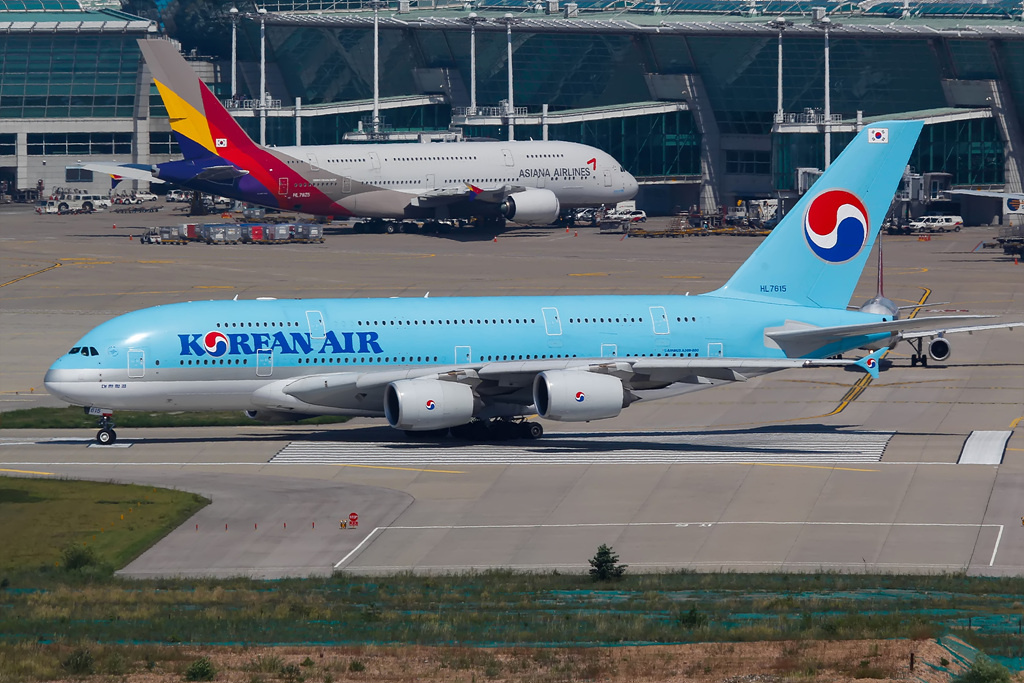South Korean airlines held 70% of overseas seats, with other carriers taking the remaining 30%.
SEOUL- The merger of Korean Air (KE) with Asiana Airlines (OZ) will impact South Korea’s aviation market, which is one of the world’s top ten largest.
This historic consolidation would significantly alter the country’s international aviation scene, lowering the number of domestic carriers from ten to seven and consolidating market power among fewer companies.

Korean Air Asiana Merger
Cirium’s December 2024 itineraries, as supplied by Pang Yee Huat, show a significant shift in international seat capacity distribution.
Previously, South Korean airlines controlled 70% of overseas seats, while foreign carriers held the remaining 30%.
The merger will further concentrate this capacity, with the combined Korean Air and Jin Air now accounting for nearly half (49%) of South Korea’s international seat capacity.
The strategic merger encompasses not only Korean Air and Asiana Airlines, but also the integration of Air Busan and Air Seoul into Jin Air. This restructure is intended to establish more efficient and competitive airline firms in the South Korean industry.
To ensure strong competition, South Korea is looking into ways to promote more foreign airline involvement.
Currently, 75 international carriers operate in the country, with top contributors including VietJet Air, China Eastern Airlines, China Southern Airlines, Vietnam Airlines, and Air China. Each of these airlines accounts for 1-3% of the seat capacity share.

Government Initiatives
Following the merger of Korean Air and Asiana Airlines, the South Korean government is taking strong steps to ensure that the airline business remains competitive.
According to industry insiders, the government intends to promote low-cost carriers (LCCs) for medium and long-haul routes, particularly those to rising markets like India and Vietnam.
Additional approaches include increasing air rights for rural airports and encouraging charter flights to underserved areas. To increase Incheon Airport’s worldwide competitiveness, new routes will be added, and transfer times will be optimized.
The government is also dedicated to assisting regional airports by providing subsidies for new routes and incentives to airlines.
Furthermore, in partnership with the Fair Trade Commission, the government seeks to combat monopolistic behaviors and promote a fair market environment.
Other significant goals include extending aviation freight services, particularly to China, and putting in place safeguards to ensure safe operations as international travel demand rises.

New Potential Market
South Korea now serves three locations in Indonesia: Jakarta, Denpasar, and Batam. More over 1 million passengers flew between the two nations in the year ending September 2024, with 37% taking connecting flights.
There are prospects to enhance direct services to these locations and explore additional links to secondary cities such as Surabaya, Medan, and Lombok as bilateral relations deepen and air rights liberalize further. Expanding flights outside Incheon could also help diversify and improve connectivity.
On the India front, there is currently only one direct route between South Korea and India: Seoul to Delhi, operated by Air India (AI) and Korean Air.
However, during the same 12-month period, 65% of the 344,000 passengers who traveled between the two countries had connecting flights, indicating that nonstop capacity was insufficient to fulfill demand.
With ongoing modifications to the bilateral air rights agreement, there is a substantial opportunity for additional nonstop flights to key Indian destinations including Mumbai, Bengaluru, and Chennai.
These aviation policy improvements highlight South Korea’s aviation sector as an intriguing area to monitor.













Leave a Reply